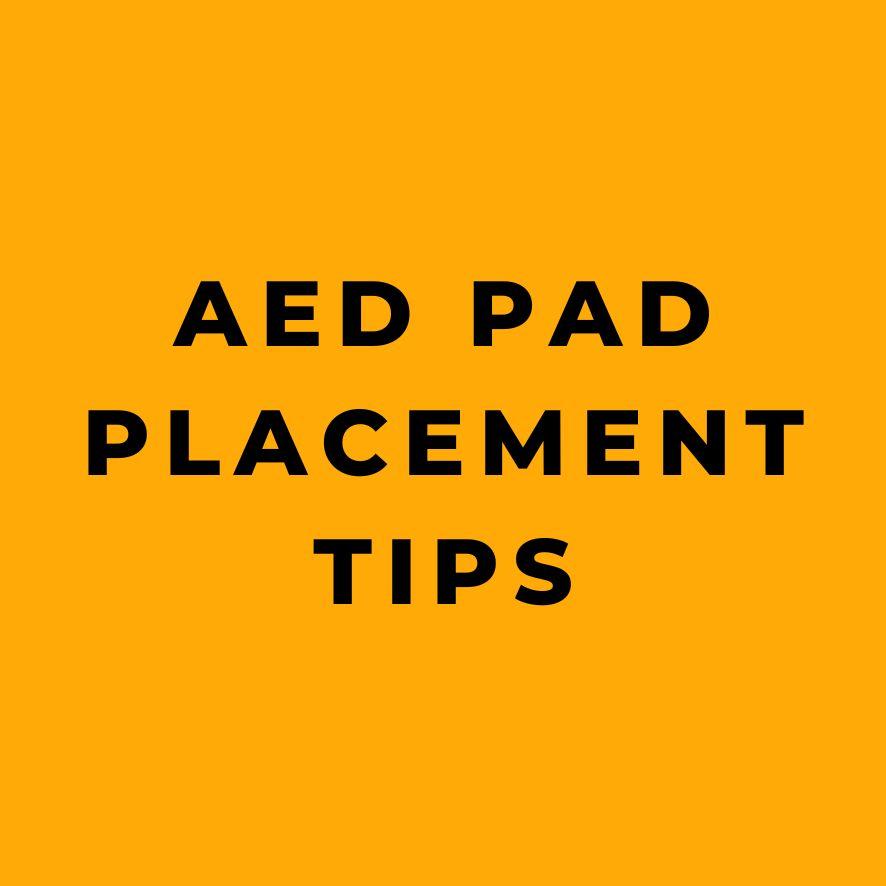Automated External Defibrillators (AEDs) are life-saving devices that can be used to administer an electric shock to the heart of a person experiencing sudden cardiac arrest. Proper AED pad placement is crucial for the effective delivery of this shock and increasing the chances of survival for the victim. In this comprehensive article, we will delve into the tips and guidelines for AED pad placement, covering various aspects including placement on adults and children, common mistakes to avoid, considerations for clothing and jewelry, and addressing specific scenarios such as central lines and alternative placements.
AED Pad Placement on Adults
The proper placement of AED pads on adults is critical for ensuring the electrical current from the defibrillator passes through the heart in the most effective way possible. The standard placement for adults is the anterior-lateral positioning, which involves placing one pad on the right side of the chest, just below the collarbone, and the other pad on the lower left side of the chest. This positioning has been determined by empirical studies to be the most effective at allowing the shock to do its job.
However, it is important to note that if the victim is over 55 pounds, normal adult pads can be used in the same manner. It is crucial to ensure that the pads are applied directly to the skin, meaning any clothing must be removed from the area to ensure the device works properly.
One common mistake to avoid is misplacing the second pad. It should be placed on the left chest wall, just under the armpit area. Placing this pad on the front of the chest can make the AED shock much less effective. Additionally, ensuring that the AED pads are in contact with the skin of the patient is important, especially in cases where the patient has chest hair. Most AEDs come with a small razor for this purpose, or an extra set of AED pads can be used to remove the hair from the pad placement area.
AED Pad Placement on Children
For children, the placement of AED pads is similar to adults, with the “anterior” pad typically placed on the child’s chest, in the area of their sternum, while the “posterior” pad is placed on their back, in the area of their spine. However, the specific placement of the pads may vary depending on the size and age of the child, as well as the specific type of AED used.
If the victim is over 55 lbs., normal adult pads can be used in the same manner, but it is important to follow the instructions provided by the AED and any additional guidelines provided by a healthcare provider or trained medical professional.
Clothing and Jewelry Considerations
When using an AED, it is crucial to ensure that the pads are applied directly to the skin, meaning any clothing must be removed from the area to ensure the device works properly. Additionally, jewelry or any metal objects on the chest area should be removed to prevent interference with the AED pads.
Specific Scenarios and Alternative Placements
In cases where a patient has a central line, pacemaker, chest tube, or other issue impeding the placement of the pads, alternate placements are possible. An alternative placement method, known as Anteroposterior AED Pad Placement, involves placing an electrode pad on the chest and the other on the back. This is usually how AED pads are placed on infants. It is important to ensure that the electrical current flows through the heart, and alternative placements can be used to achieve this goal if necessary.
Common Questions and Misconceptions
One common question that arises is whether the placement of AED pads differs for men, women, and pregnant women. The electrode pad placement is the same for all adults, irrespective of gender or pregnancy. However, the specific positioning might vary from one AED brand to the next, so it is important to check the AED’s owner’s manual for specific electrode pad placement instructions.
Another common misconception pertains to the reusability of AED pads. It is important to note that AED electrode pads are single-use and should not be reused.
Summary
In summary, proper AED pad placement is a crucial step in the chain of survival for a person experiencing sudden cardiac arrest. The placement of the pads on the body is important because it helps ensure that the electrical current from the defibrillator passes through the heart in the most effective way possible. By following the guidelines for AED pad placement, including considerations for adults, children, clothing, and specific scenarios, rescuers can contribute to increasing the chances of survival for sudden cardiac arrest victims. It is essential for individuals who have access to AEDs to familiarize themselves with the proper pad placement techniques and to stay updated on any new guidelines or recommendations in this life-saving practice.










